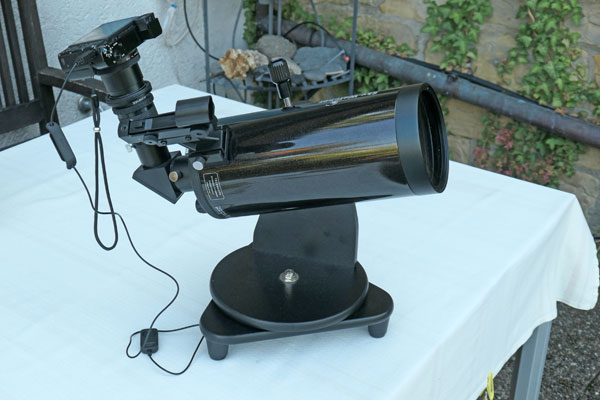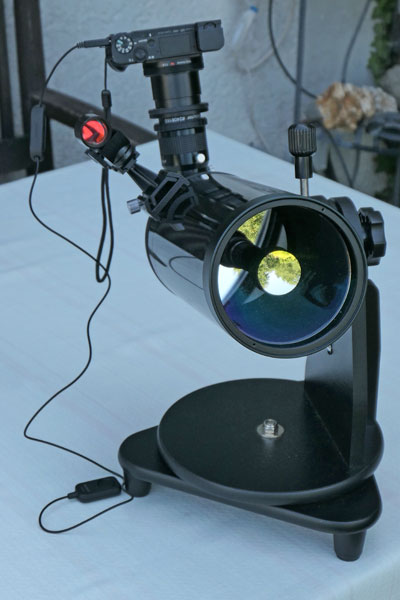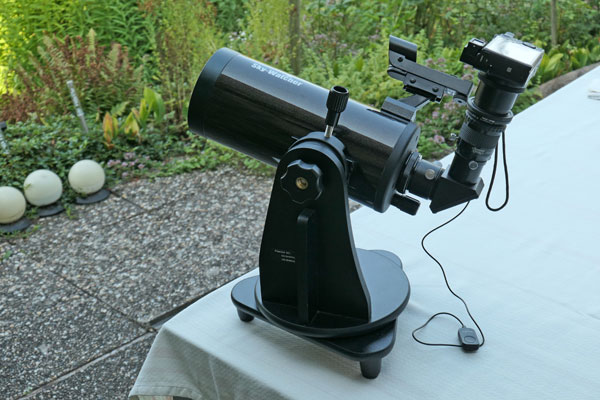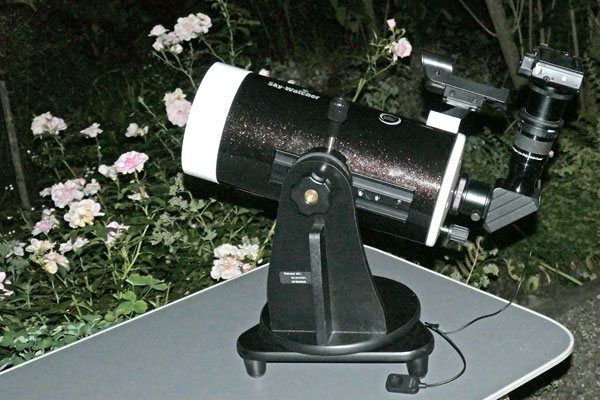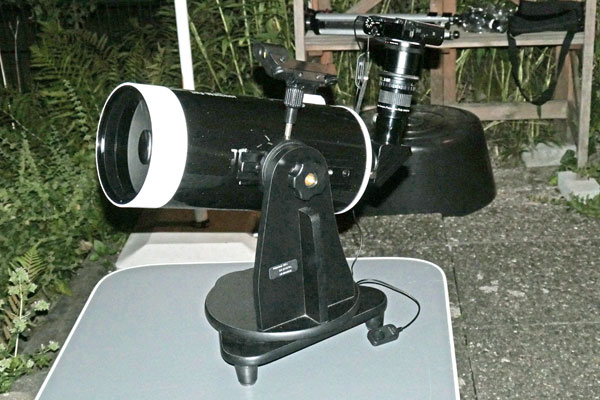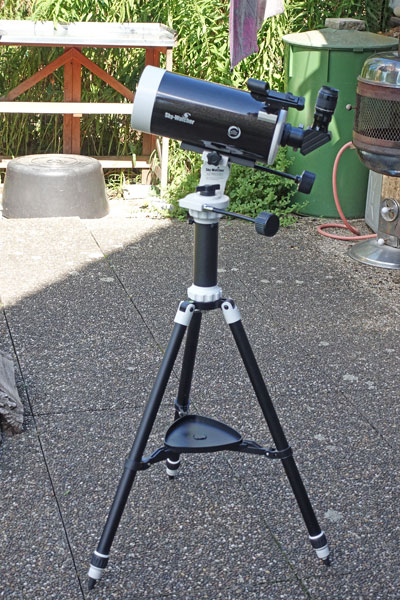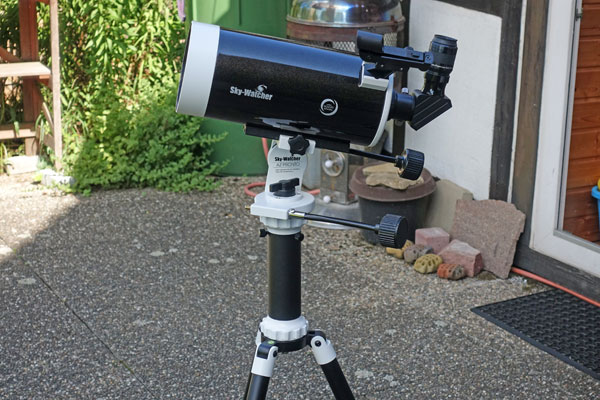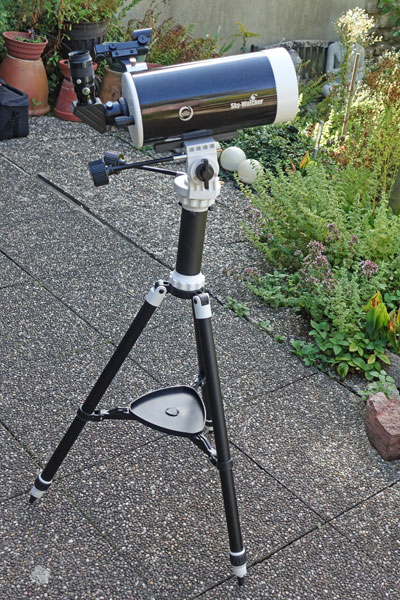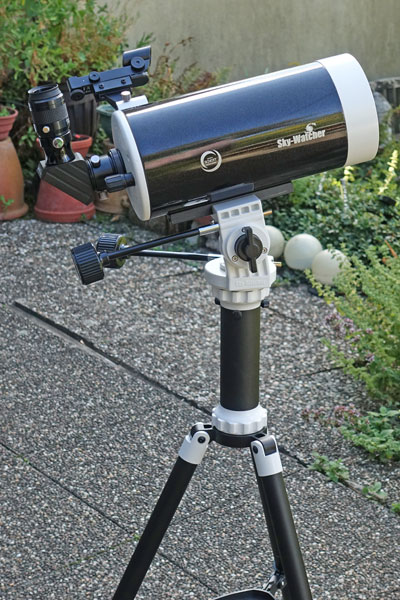Jupiter, Saturn, and More - August 2018
Photos - Jupiter | Photos - Saturn | Photos - Mars | Photos - Venus | Photos - Equipment | Conclusions
The following photos show Jupiter and Saturn, which were clearly visible at the beginning of August 2018 (August 3 and 5, 2018). Mars was also well visible, but because dust storms dipped its surface in a uniform yellow, the photos (August 5, 2918) were not worth the effort... Venus was also visible and was a crescent (about "half Venus"), but the photos that I took were disappointing.
In the Sky-Watcher Skymax-102 and Skymax-127 telescopes, both planets produced only very small discs with the 32 mm eyepiece, on which I screwed a camera. I set the optical zoom of the attached Sony RX100 M4 to the maximum value of 70 mm (equivalent) to achieve the largest possible image.
The connection of the camera to the telescopes is shown on the page Sony RX100 M4 Attached to Telescope. Further down I present photos of the equipment that I used.
I used the Mini-Dobson base of the Heritage 100P, on which both telescopes trembled a lot, particuarly the larger and heavier Skymax-127. Fortunately, I had a remote cable release for the camera, but with this you might make the telescope tremble as well if you pull too much on the cable... On the second day I also used the Star Discovery mount by hand.
On the first day (August 3, 2018), I took photos of Jupiter only with the Skymax-102, on the second day (August 5, 2018) only with the Skymax-127. When taking photos of Jupiter, it is hard if not impossible, to capture both surface structures and the moons. I captured Saturn on the first day with both telescopes. Venus and Mars were captured on the second day using the Skymax-127.
For visual observations, I used eyepieces with focal lengths of 16 mm, 10 mm, and 7 mm. Due to the heat, however, the observations were impaired by air turbulence, especially at high magnifications (10 mm and 7 mm eyepieces).
Addendum: On August 19, 2018, I took further photos of Saturn: Skymax-127 with 10 mm eyepiece on AZ Pronto mount, Sony RX100 M4 held to the eyepiece (ISO 1600, 1/30, f/2.8).
Photos - Jupiter
Sky-Watcher Skymax-102
The followings photos of Jupiter and its four largest moons were taken on August 3, 2018.
 |
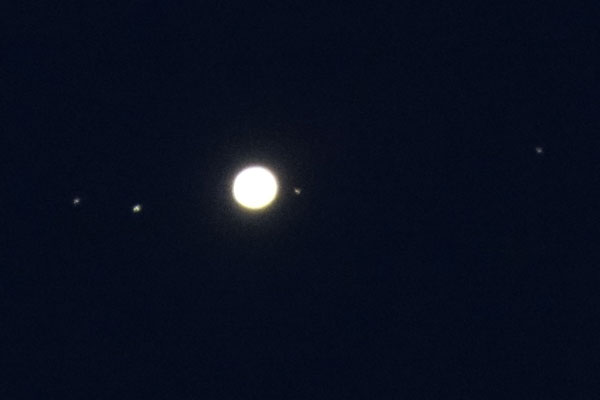 |
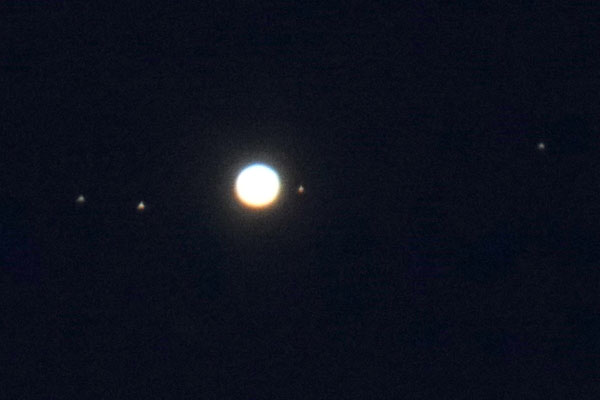 |
||
Jupiter and its four largest moons photographed under different conditions |
||||
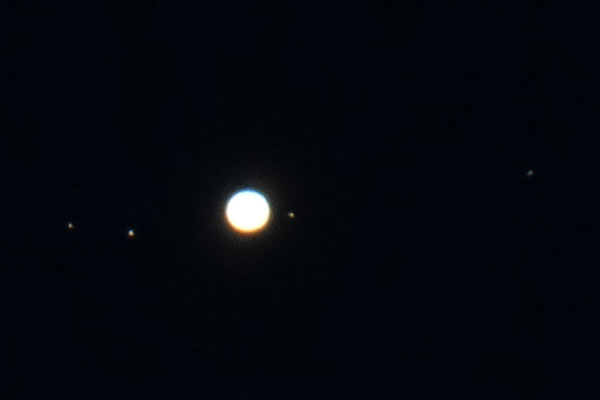 |
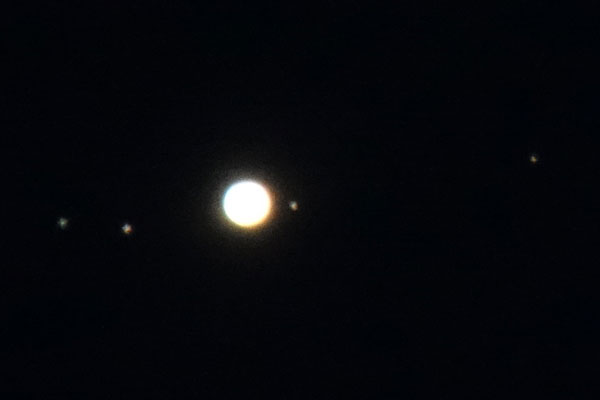 |
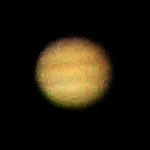
Jupiter alone, which allows to show surface structures |
||
Ditto |
||||
Skymax-127
The followings photos of Jupiter were taken on August 5, 2018.
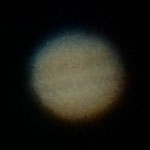 |
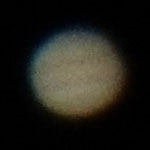 |
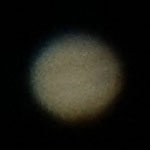 |
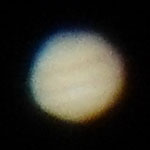 |
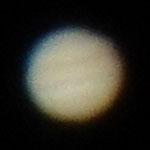 |
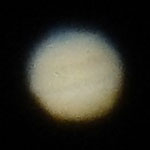 |
|||||
Photos cropped but not processed; the left 5 photos were taken with ISO 1600, the right one with ISO 800 |
||||||||||
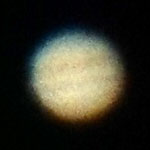 |
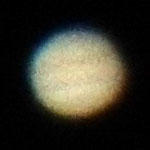 |
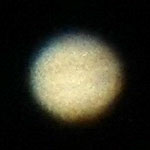 |
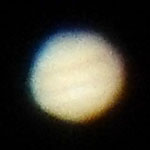 |
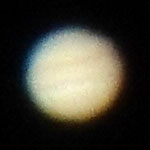 |
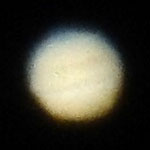 |
|||||
Photos made lighter |
||||||||||
Half size (easier to see the stripes):
 |
 |
 |
 |
 |
 |
|||||
Photos cropped but not processed; the left 5 photos were taken with ISO 1600, the right one with ISO 800 |
||||||||||
 |
 |
 |
 |
 |
 |
|||||
Photos made lighter |
||||||||||
Jupiter and its four largest moons:
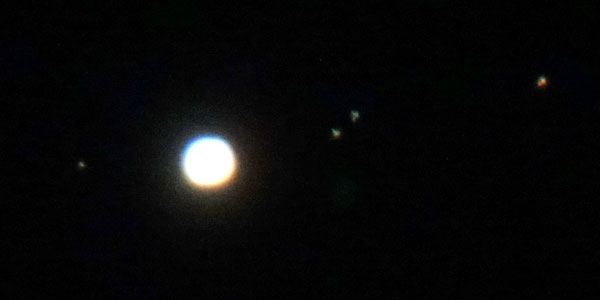 |
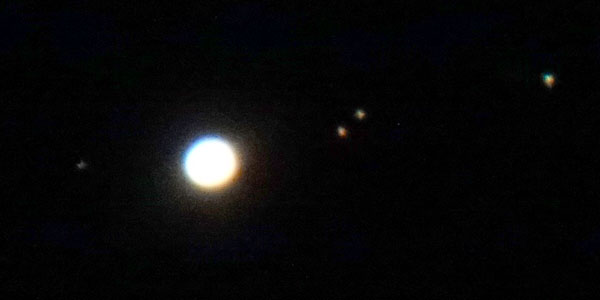 |
 |
||
Note the difference in the positions of the moon two days later! |
||||
Photos - Saturn
Sky-Watcher Skymax-102
The followings photos of Saturn with its ring were taken on August 3, 2018.
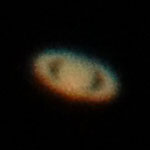 |
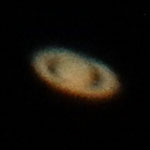 |
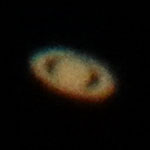 |
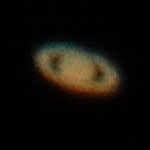 |
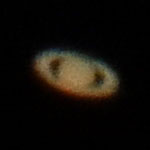 |
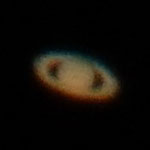 |
|||||
Photos cropped but not processed; the left 5 photos were taken with ISO 1600, the right one with ISO 800 |
||||||||||
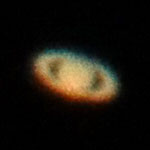 |
 |
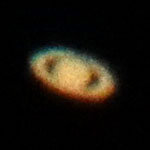 |
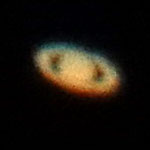 |
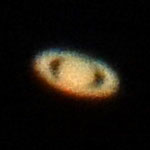 |
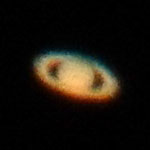 |
|||||
Photos made lighter |
||||||||||
Sky-Watcher Skymax-127
The followings photos of Saturn with its ring were taken on August 3, 2018.
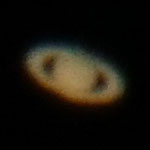 |
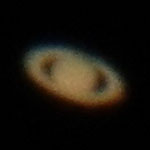 |
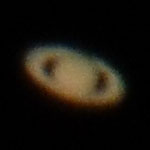 |
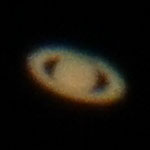 |
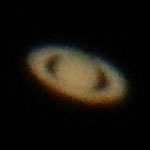 |
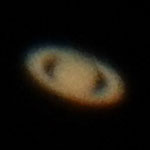 |
|||||
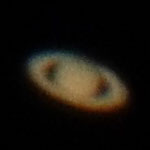 |
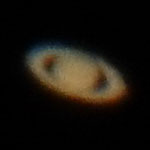 |
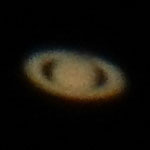 |
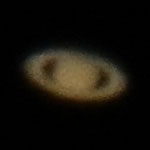 |
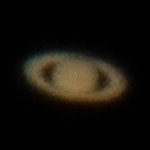 |
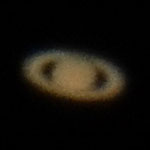 |
|||||
Photos cropped but not processed;all photos were taken with ISO 800 |
||||||||||
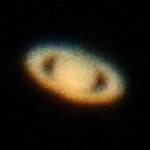 |
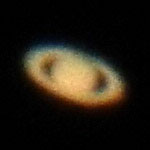 |
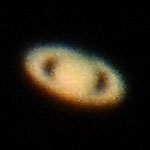 |
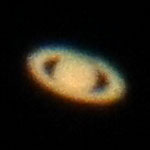 |
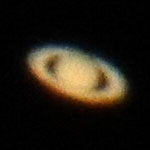 |
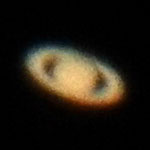 |
|||||
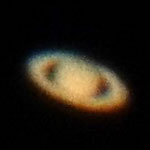 |
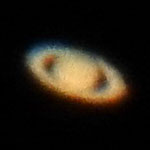 |
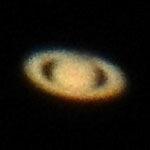 |
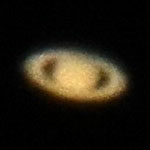 |
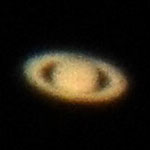 |
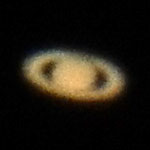 |
|||||
Photos made lighter |
||||||||||
Comparison
 |
 |
 |
 |
 |
 |
|||||
Skymax-102 (brighter versions) |
||||||||||
 |
 |
 |
 |
 |
 |
|||||
Skymax-127 (brighter versions) |
||||||||||
Addendum: Photos from August 19, 2018, Sky-Watcher Skymax-127
The followings photos of Saturn with its ring were taken on August 19, 2018. They were taken at a magnification of 150 x and a camera focal length of 70 mm (equiv.) and are therefore larger than the previous ones.
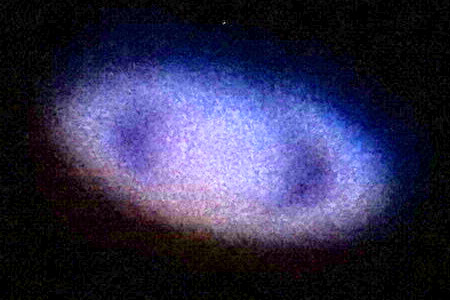 |
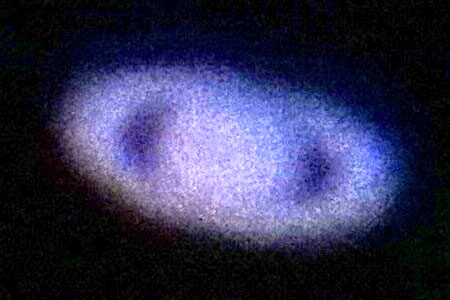 |
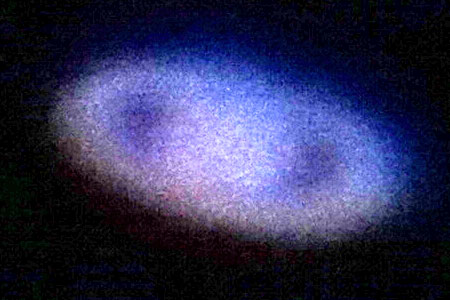 |
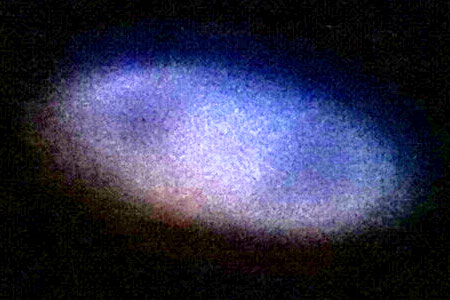 |
|||
Skymax-127, 150 x, ISO 1600, 1/30, F2,8, 70 mm (brightened) |
||||||
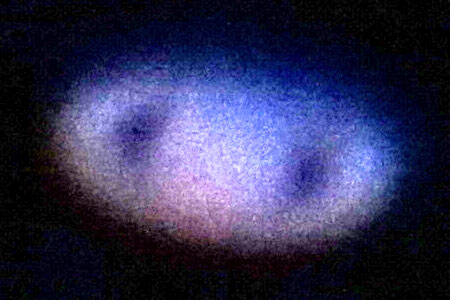 |
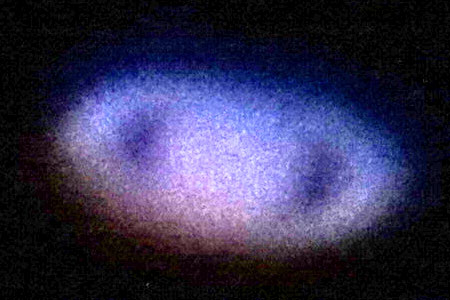 |
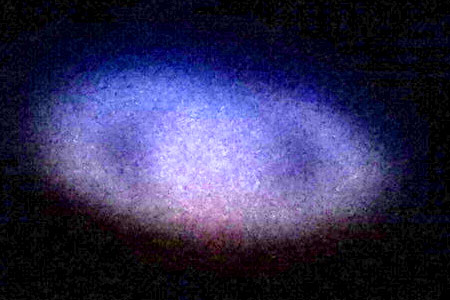 |
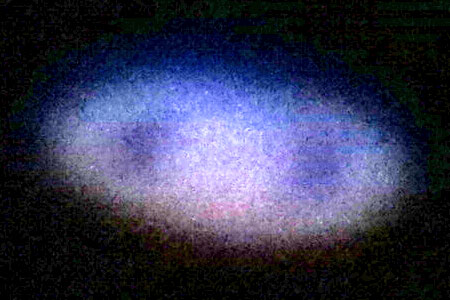 |
|||
Skymax-127, 150 x, ISO 1600, 1/30, F2,8, 70 mm (brightened) |
||||||
Overall, these photos of Saturn are larger, but much fuzzier than the previous ones. Perhaps scaling them to the same pixel size makes them look more similar:
 |
 |
 |
 |
|||
Skymax-127, 150 x, ISO 1600, 1/30, F2,8, 70 mm (brightened) |
||||||
 |
 |
 |
 |
|||
Skymax-127, 150 x, ISO 1600, 1/30, F2,8, 70 mm (brightened) |
||||||
Photos - Mars
The followings photos of Mars were taken on August 5, 2018.
Sky-Watcher Skymax-127
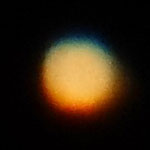 |
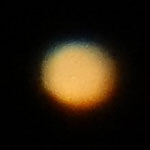 |
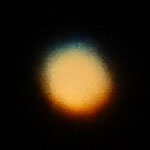 |
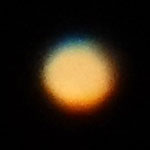 |
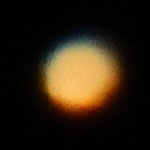 |
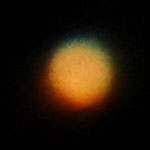 |
|||||
Photos cropped but not processed, except fot the right-most one (ISO 800) |
||||||||||
Photos - Venus
The followings photos of Venus as a crescent (about "Half Venus") were taken on August 5, 2018.
Sky-Watcher Skymax-127
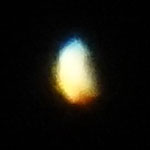 |
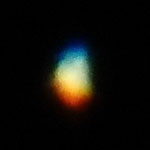 |
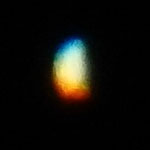 |
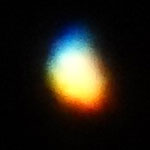 |
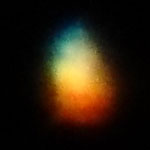 |
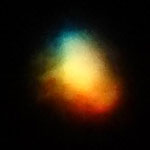 |
|||||
Photos cropped but not processed (ISO 800) |
||||||||||
Photos - Equipment
The equipment photos with the Skymax-102 were taken a day after.
Sky-Watcher Skymax-102 |
||||
|
|
|
|||
Sky-Watcher Skymax-127 |
||||
|
|
|
|||
Note: I did not take photos of the Skymax-127 on the AZ Pronto mount, but it looked similar to this (with extender, no camera):
Side view |
Ditto (detail) |
Other side |
Ditto (detail) |
Conclusions
Overall, the magnifications of the two Sky-Watcher Skymax-102 (1300 mm focal length) and Skymax-127 (1500 mm focal length) telescopes together with the 32 mm eyepiece (magnifications are 41 x and 47 x) are not sufficient to really reveal details. Here is reveal how many pixels I got with maximum optical zoom of the Sony RX100 M4 (zoom to 70 mm equivalent):
- Skymax-102: Saturn disk 40-45 pixels, with ring 85 pixels, Jupiter disk 70-75 pixels
- Skymax-127: Saturn disk 50 pixels, with ring 100 pixels, Jupiter disk 90-100 pixels, Mars disk 80 pixels, Venus crescent about 80 pixels (hars to determine...)
When I used the TeleVue 10 mm eyepiece, I got more pixels at the Skymax-127 (Saturn: 330 to 350), but was regrettably not able to attach the camera to this eyepiece.
Jupiter
When taking photos of Jupiter, you have to decide whether you want to see the surface of the planet or the moons. Initially, I chose the moons, and only in one case did I get a useful picture of the surface. On the second day, I tried both. Admittedly, I have already managed to get better photos of Jupiter alone...
Saturn
In the case of Saturn, my photos provide a similar picture impression as what you would get visually (if you reduce the size of the photos slightly...). After all, the ring is easy to recognize, that is already something!
The differences in magnification between the two telescopes are not significant. What is more striking is that the Skymax-127 produces fewer color fringes than the Skymax-102.
The lower noise of the Skymax-127 photos is due to the fact that they were all taken with ISO 800, while most Skymax-102 photos were taken with ISO 1600, which shows that it is worth setting a lower ISO value for bright objects.
My later Saturn photos taken with a 10 mm eyepiece achieved larger pixel sizes at the expense of fuzziness...
Mars
Because of the dust storms on Mars, but maybe also due to my equipment, only a yellow disc with color fringes could be photographed...
Venus
Since Venus stood very low on the horizon, and the seeing was poor, the Venus crescent was better to see in the telescope than to photograph (strong color fringes!).
On Photography...
There are three things that can make life difficult with astronomy photos:
- Focusing: When shooting with a telephoto lens, it is enough to manually
set the distance to infinity. If the camera is attached to a telescope, however,
this is not sufficient, because the telescope must also be focused correctly.
This succeeds less well for surface structures than for stars. I had tried
using the surface of the moon for focusing during the total lunar eclipse
in 2018 and failed miserably, because the viewfinder image was too dark for
this.
The Sony RX100 M4 must also be set to manual focus (MF) and infinity after certain operations or after switching it off, which is a bit tricky. Maybe you should save the camera settings so that you can quickly recall them... - Exposure: A small bright dot in front of a black background is not correctly exposed by any camera, but overexposed. It is best to adjust the exposure manually according to the "eye impression" of the digital camera (viewfinder image, especially during playback). However, some cameras, such as the Sony RX100 M4, do not make it easy to set aperture and exposure simultaneously in manual mode, especially when manual focus is set and an adjustment ring is occupied. Unfortunately, only a look into the camera manual helped here: the "bottom" button on the control wheel (exposure cpmpensation) is used to toggle between setting aperture and setting shutter speed.
- Protection against camera shake: With the moon, you easily get exposure times down to 1/1000 sec, with the planets this is however different. With a suitable choice of sensitivity (ISO) and aperture, I reached ranges around 1/20 - 1/30 sec. But if the telescope is mounted on a shaky mount, this will not help much, unless you use a remote trigger - either by cable (which can also cause the telescope to tremble) or preferably wirelessly, for example via a camera app on your smartphone or tablet computer. The self-timer might also be used here.
All in all, I made some mistakes when taking the above shots, but in any case I got the best Saturn photos I have ever taken!
| 30.08.2018 |
